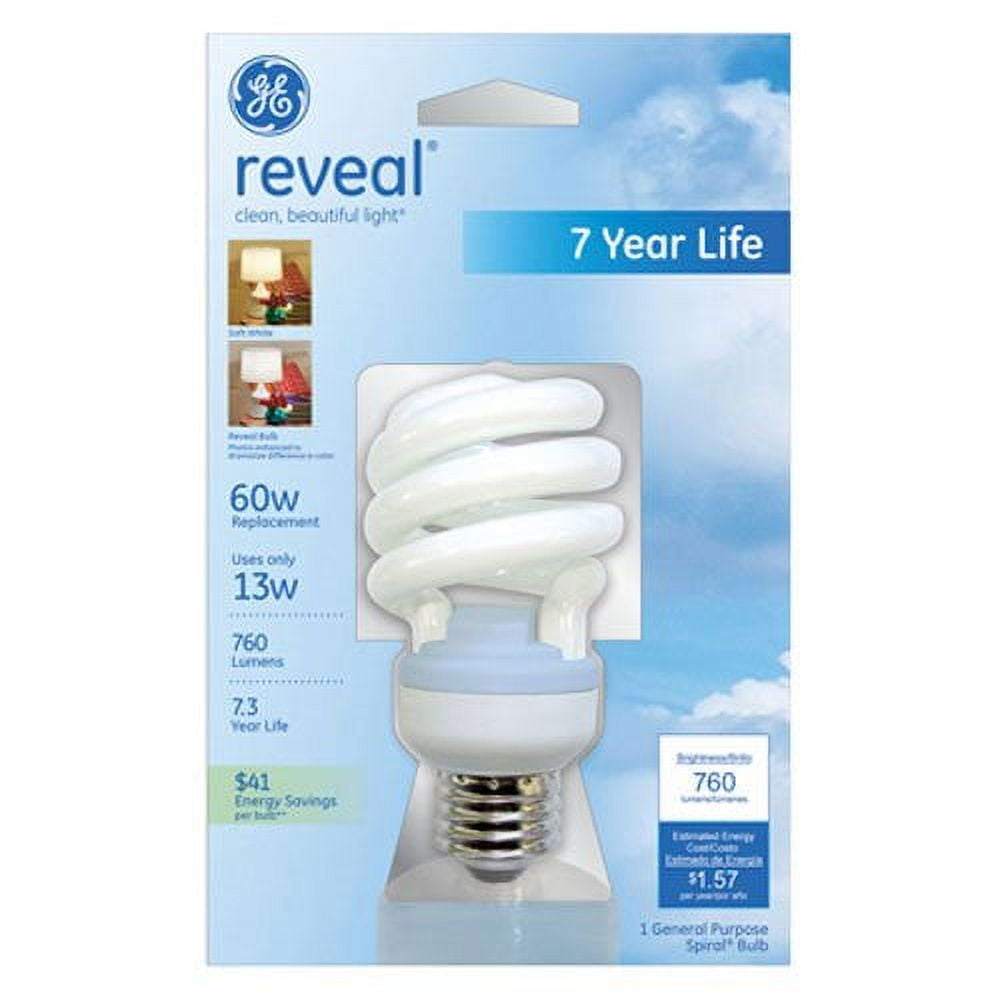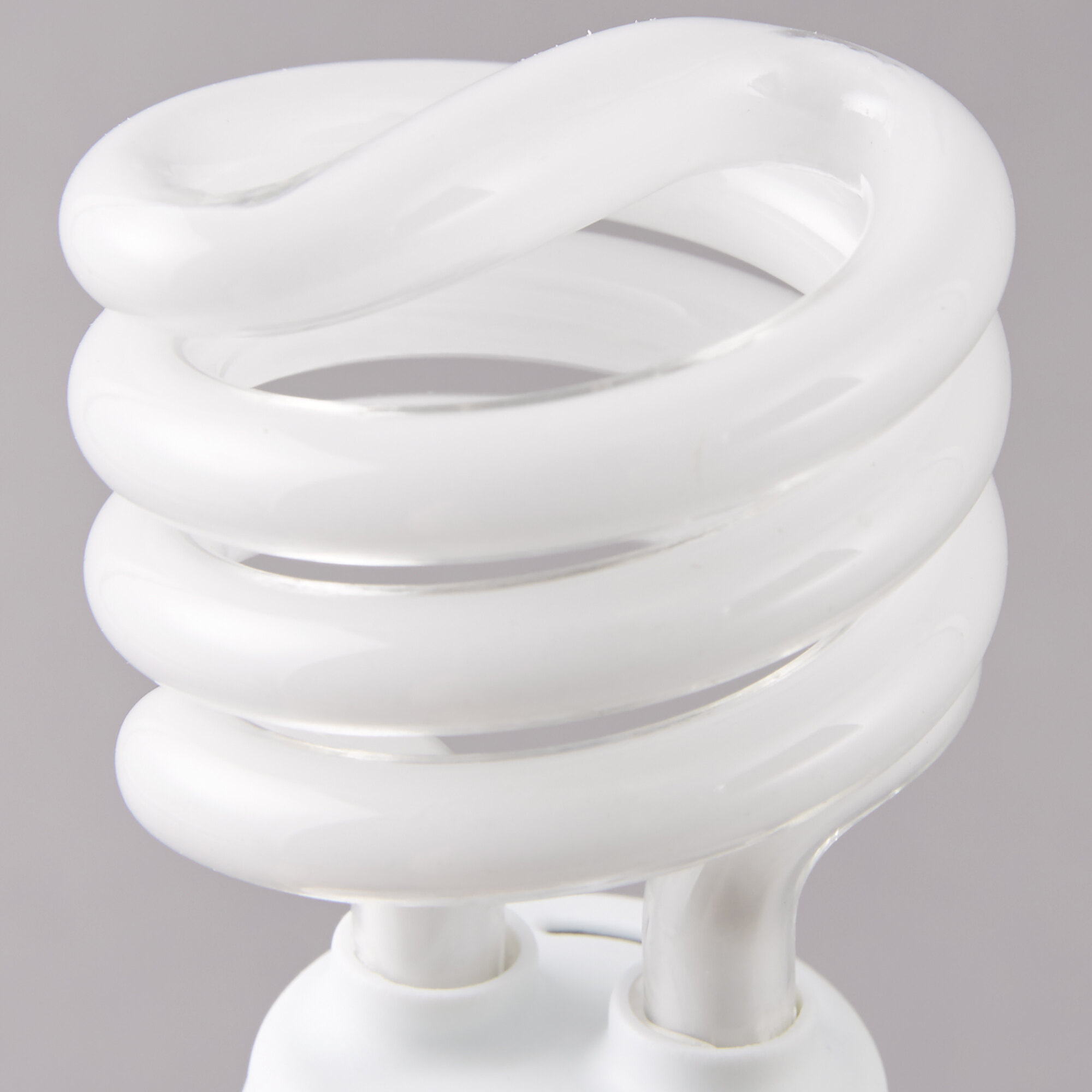13 Watt Cfl Bulb 60 Watt Equivalent

The humble light bulb, a fixture in homes and businesses for over a century, is undergoing constant evolution. One particular iteration, the 13-watt Compact Fluorescent Lamp (CFL) marketed as a 60-watt incandescent equivalent, has been a subject of debate and scrutiny, raising questions about energy efficiency claims, light quality, and overall environmental impact.
This article delves into the specifics of the 13-watt CFL, examining its purported energy savings, comparing it to other lighting technologies like LEDs, and considering the concerns surrounding mercury content and disposal. Understanding the nuances of this specific bulb can help consumers make informed choices in the face of rapidly changing lighting technology.
The Promise of Energy Savings
The primary appeal of the 13-watt CFL is its promise of significant energy savings compared to traditional 60-watt incandescent bulbs. This claim stems from the fundamental difference in how these two types of bulbs produce light. Incandescent bulbs generate light by heating a filament until it glows, a process that wastes a significant amount of energy as heat, while CFLs use a gas-filled tube that emits ultraviolet light, which then excites a phosphor coating to produce visible light.
Industry data, including reports from the U.S. Department of Energy, generally supports the assertion that CFLs are more energy-efficient. A 13-watt CFL typically consumes about 75% less energy than a 60-watt incandescent bulb while producing a similar amount of light, measured in lumens.
The lifespan of a CFL is also considerably longer than that of an incandescent bulb. A typical CFL can last up to 10 times longer, further contributing to cost savings over its lifespan.
Comparing CFLs to LEDs
While CFLs offered a significant improvement over incandescent bulbs, the emergence of Light Emitting Diodes (LEDs) has introduced a new contender in the energy-efficient lighting market. LEDs are even more energy-efficient than CFLs, using even less electricity to produce the same amount of light.
LEDs also boast a longer lifespan than CFLs, often lasting 25,000 hours or more. They also do not contain mercury, a hazardous substance present in CFLs that requires special disposal procedures.
However, CFLs often have a lower upfront cost compared to LEDs, making them a potentially more accessible option for some consumers. The long-term cost-effectiveness, considering energy savings and lifespan, generally favors LEDs, though.
The Mercury Issue and Disposal Concerns
One of the significant drawbacks of CFLs is their mercury content. Mercury is a neurotoxin, and even small amounts can pose health risks if a bulb is broken, particularly in enclosed spaces.
The Environmental Protection Agency (EPA) provides guidelines for cleaning up broken CFLs, emphasizing the importance of ventilation and avoiding the use of a vacuum cleaner, which can spread mercury vapor. Proper disposal of CFLs is crucial to prevent mercury from entering the environment.
Many local governments and retailers offer recycling programs for CFLs, ensuring that the mercury is safely recovered and the other components are properly disposed of. Consumers should check their local regulations and participate in these programs to minimize the environmental impact of CFLs.
Light Quality and Consumer Preferences
Beyond energy efficiency and environmental concerns, light quality plays a crucial role in consumer satisfaction. Early CFLs were often criticized for their harsh, unnatural light, which many found unappealing.
Manufacturers have made significant improvements in CFL light quality over the years, offering a wider range of color temperatures and improved dimming capabilities. However, some consumers still prefer the warmer light of incandescent bulbs or the vibrant colors produced by certain LEDs.
Choosing the right light bulb is a matter of personal preference and intended use. Consider the color temperature, brightness, and dimming capabilities when selecting a CFL or any other type of light bulb.
The Future of Lighting
The lighting industry is rapidly evolving, with LEDs becoming increasingly dominant. While the 13-watt CFL once represented a significant step forward in energy efficiency, its reign is likely coming to an end.
LED technology continues to improve, offering even greater energy savings, longer lifespans, and better light quality at increasingly affordable prices. As LEDs become more ubiquitous, the environmental concerns associated with CFLs will become less of an issue.
Ultimately, the shift towards energy-efficient lighting technologies like LEDs is crucial for reducing energy consumption and mitigating the impact of climate change. While the 13-watt CFL served its purpose, the future of lighting lies in more sustainable and environmentally friendly alternatives.


















